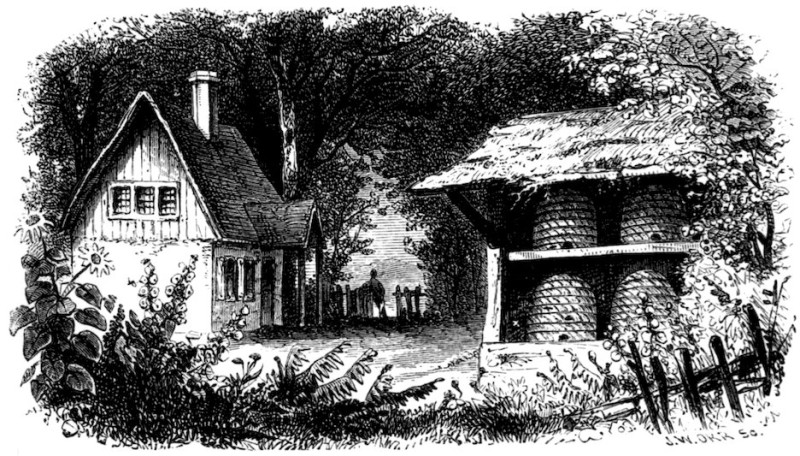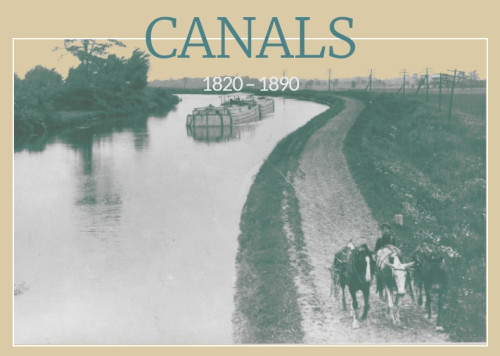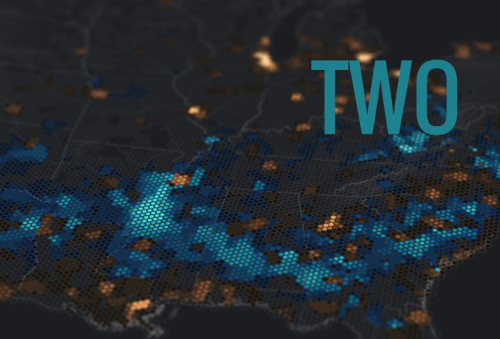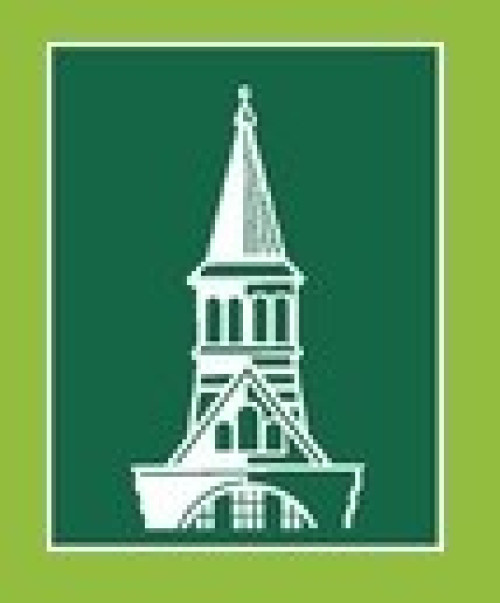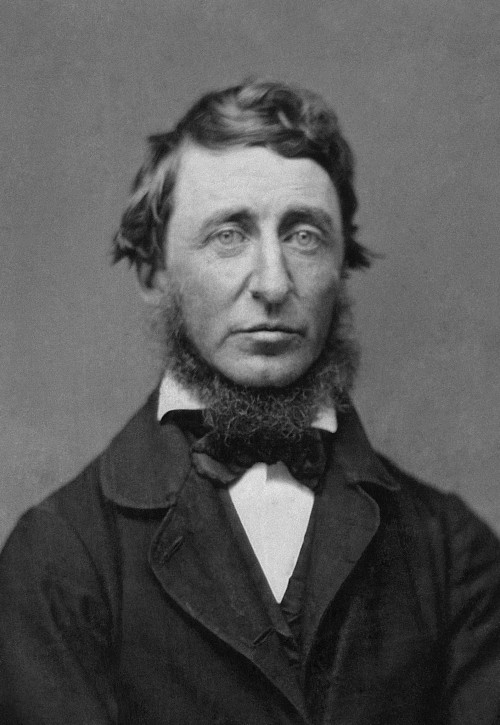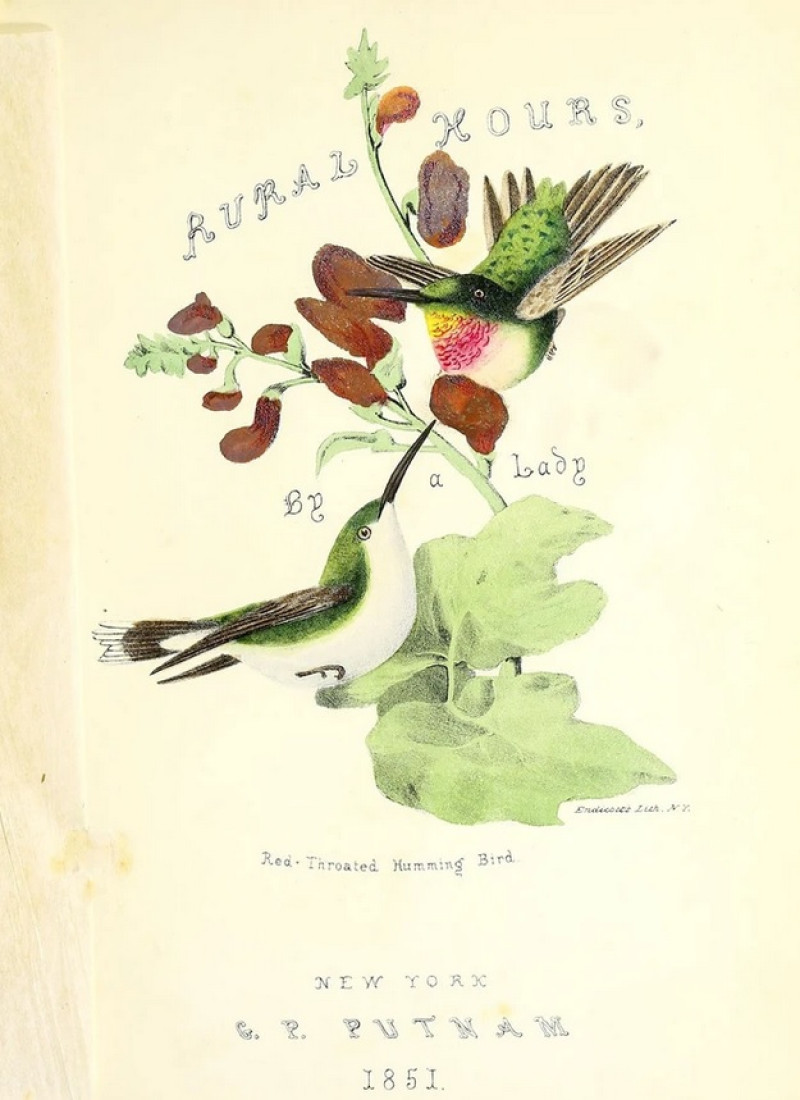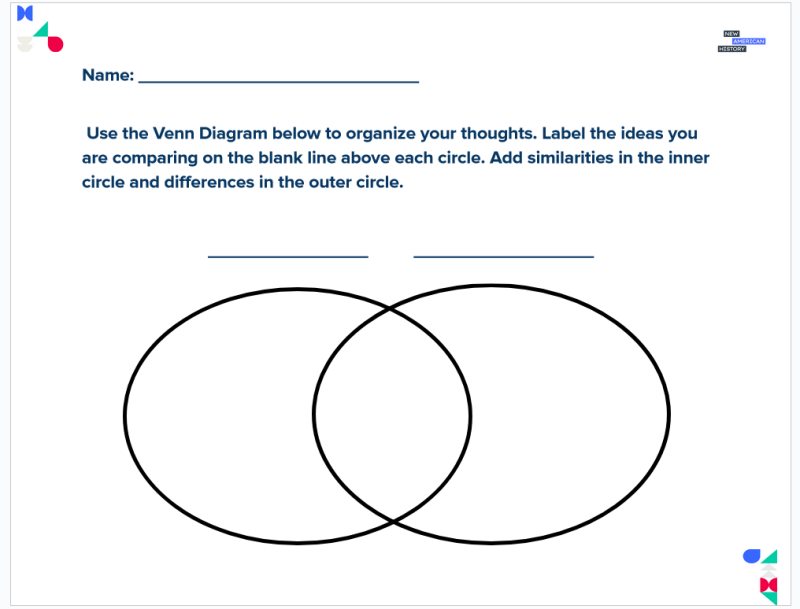This work by New American History is licensed under a Attribution-NonCommercial-ShareAlike 4.0 (CC BY-NC-SA 4.0) International License. Permissions beyond the scope of this license may be available at newamericanhistory.org.
Susan Fenimore Cooper - Rural Hours
View Student Version
Standards
CCSS.ELA-LITERACY.RH.9-10.6Compare the point of view of two or more authors for how they treat the same or similar topics, including which details they include and emphasize in their respective accounts.
C3 Framework: D2.His.1.9-12. Evaluate how historical events and developments were shaped by unique circumstances of time and place as well as broader historical contexts.
D2.His.2.9-12. Analyze change and continuity in historical eras.D2.His.3.9-12. Use questions generated about individuals and groups to assess how the significance of their actions changes over time and is shaped by the historical context.
National Council for Social Studies:Theme 2 - TIME, CONTINUITY, AND CHANGETheme 5 - INDIVIDUALS, GROUPS, AND INSTITUTIONS
National Geography Standards: Standard 6. How culture and experience influence people’s perceptions of places and regions.
College Board AP U.S. History (Fall 2020)HISTORICAL THINKING SKILLS COVERED:SKILL 4.A – Identify and describe a historical context for a specific historical process or development.SKILL 5.A: Identify patterns or connections between historical developments.
TOPIC 8.13THEME 3: GEOGRAPHY AND THE ENVIRONMENT (GEO) This theme focuses on the role of geography and both the natural and human-made environments in the social and political developments in what would become the United StatesUNIT 8 LEARNING OBJECTIVE O: Explain how and why policies related to the environment developed and changed from 1968 to 1980.KC-8.2.II.D: Environmental problems and accidents led to a growing environmental movement that aimed to use legislative and public efforts to combat pollution and protect natural resources. The federal government established new environmental programs and regulations.TOPIC 9.6 THEME 6: AMERICA IN THE WORLD (WOR) This theme focuses on the interactions between nations that affected North American history in the colonial period and on the influence of the United States on world affairsUnit 9: Learning Objective F. Explain the causes and effects of the domestic and international challenges the United States has faced in the 21st century.KC-9.3.II.C: Conflicts in the Middle East and concerns about climate change led to debates over U.S. dependence on fossil fuels and the impact of economic consumption on the environment.
EAD Framework:Design Challenges:Motivating Agency, Sustaining the Republic America’s Plural Yet Shared Story
Primary Theme:Our Changing LandscapeRelated Driving Questions:How did different groups of people understand and express their connections to the land?What are my responsibilities for the land that I live on?How does learning about the past help me learn about the present and prepare for the future?HDQ2.4A How have different groups of Americans taken responsibility for the landscape of the United States? How has that changed over time? How do they do so now?
Teacher Tip: Think about what students should be able to KNOW, UNDERSTAND and DO at the conclusion of this learning experience. A brief exit pass or other formative assessment may be used to assess student understandings. Setting specific learning targets for the appropriate grade level and content area will increase student success.
Suggested Grade Levels: 9-12/APUSH
Suggested Timeframe: 2 days (90 minute sessions) or 3 days (45 minute sessions)
Suggested Materials: Internet access via laptop, tablet or mobile device
Key Vocabulary
American Industrial Revolution - The Industrial Revolution took place over more than a century, as production of goods moved from home businesses, where products were generally crafted by hand, to machine-aided production in factories. This revolution, which involved major changes in transportation, manufacturing, and communications, transformed the daily lives of Americans as much as— and arguably more than—any single event in U.S. history.
Botanist - A person engaged in botany, the scientific study of plants.
Conservationist - A person who maintains natural areas or protects threatened species.
Encroach - To seize, appropriate; to intrude unrightfully on someone else’s rights or territory
Environmentalist - One who advocates for the protection of the environment and biosphere from misuse by human activity through such measures as ecosystem protection, waste reduction, and pollution prevention.
Feminist - A person who believes in bringing about the equality of the sexes (of women and men) in all aspects of public and private life.
GIS (Geographic Information System) -A computer system that analyzes and displays information that's referenced to a geographic location.
Naturalism - A doctrine that denies a strong separation between scientific and philosophical methodologies and/or topics.
Naturalist - A person who believes in or advocates the tenets of philosophical or methodological naturalism.
StoryMap - a GIS web-based tool that lets users share maps with narrative text and other multimedia content
Transcontinental Railroad - The Railroad Act of 1862 put government support behind the transcontinental railroad and helped create the Union Pacific Railroad, which joined with the Central Pacific at Promontory, Utah, on May 10, 1869, and signaled the linking of the continent.
Read for Understanding
Teacher Tip:
New American History Learning Resources may be adapted to a variety of educational settings, including remote learning environments, face-to-face instruction, and blended learning.
If you are teaching remotely, consider using videoconferencing to provide opportunities for students to work in partners or small groups. Digital tools such as Google Docs and Google Slides may also be used for collaboration. Rewordify helps make a complex text more accessible for those reading at a lower Lexile level while still providing a greater depth of knowledge.
These Learning Resources use the primary source, Rural Hours Alternate links to this resource are found at the University of Pennsylvania, and at Project Gutenburg.
In the ENGAGE section, students may make a copy of this Google Slide Deck to use as a template.
In the EXPLAIN sections, students will use the ESRI ArcGIS StoryMap platform to create a simple StoryMap using the free app or desktop platform. You may have students register for individual accounts, or create a division-wide account for any K-12 public school or division. (Highly recommended!) An online tutorial is provided to guide students as they create their own StoryMaps. Exemplars from Southern Journey, an interactive StoryMap from the Digital Scholarship Lab at the University of Richmond are included. Additional learning resources for using the map are available from New American HIstory.
A digital atlas, American Panorama, from the University of Richmond’s Digital Scholarship Lab is used to provide examples of maps and StoryMaps to serve as a model for student-created StoryMaps.
A video and StoryMap collection from the American Visions companion site to Edward L. Ayers’ text, American Visions: The United States, 1800-1860, are used throughout this learning resource.
A graphic organizer for creating a Venn Diagram is included. You may make a paper copy of it for students or allow them to make a digital copy of the template using Google Slides.
These Learning Resources follow a variation of the 5Es instructional model, and each section may be taught as a separate learning experience, or as part of a sequence of learning experiences. We provide each of our Learning Resources in multiple formats, including web-based and as an editable Google Doc for educators to teach and adapt selected learning experiences as they best suit the needs of your students and local curriculum. You may also wish to embed or remix them into a playlist for students working remotely or independently.
Read for Understanding (for students)
Environmental issues have been a concern since the 18th century, especially in New York with its large immigrant population and early settlement in the Manhattan and Catskill Mountains areas. Susan Fenimore Cooper, author of Rural Hours, lived in nineteenth-century Cooperstown, New York, an area in central New York. Her father was novelist James Fenimore Cooper, author of The Last of the Mohicans, who inspired her to observe nature and had her educated in European schools. Cooper wrote extensively about conserving the area in her hometown and abroad. Her book Rural Hours is a diary of her observations and artwork of both history and landscapes in her area. Today, Cooper could be identified as an environmentalist, feminist, botanist, and naturalist.
Engage:
Why was conserving the environment so important to Susan Fenimore Cooper?
Susan Fenimore Cooper is now recognized as among the first environmentalist writers. Her early work, Rural Hours shows how she spent so much time observing nature and encouraging others to take action to conserve their landscapes for future generations. It was popular during Cooper’s time to create homes and gardens that reflected one’s personal taste and refinement. Cooper was concerned that in the process of creating such landscapes that wildlife and other plant life would be harmed. She encouraged her readers to think of the future of the environment as seen in this video interpretation and this article, as excerpted in Bunk.
After watching the video and reading the article, make a copy of this Google Slide Deck to record your responses to the questions and activities in this slide, or use paper copies provided by your teacher as directed.
Explore:
Why were male writers’ works on the same topics published while women's works were not?
Susan Fenimore Cooper’s Rural Hours, published in 1850, predates George Perkins Marsh’s Man and Nature (1864), Henry David Thoreau’s Walden (1854), and Charles Darwin’s Origin of Species (1859). Thoreau referenced Cooper’s journals here; and Darwin was impressed with Cooper’s work, but their works were nationally recognized while hers were not.
Nineteenth-century morals dictated that women had a specific role in western society. As the linked article says, “As long as women functioned flawlessly within the domestic sphere and never ventured from it, women were held in reverence by their husbands and general society.”
Pre-read the Rural Hours text by looking at the cover page, preface, chapter titles, subheadings, illustrations, and read the first 2-3 sentences under the subheadings before answering the following questions. Note the subtitle on the cover page, “By a Lady.”
- Why were Cooper’s writings not originally published under her name?
- Why were women not respected as authors during this time period?
- Who were some other women of the Nineteenth Century who wrote under pseudonyms?
- How do their works compare and/or contrast with Cooper’s Rural Hours?
Explain:
How did Cooper’s Rural Hours bring attention to environmental issues and conservation ideas?
The United States experienced an industrial revolution from 1800-1860 with the building of the transcontinental railroad, expansion of factories, and increased dependence on machinery that changed American lives and its landscape. Cooper voiced concern against this revolution because it was changing the rural landscape into industrial areas, thereby encroaching on wildlife. Canals and railways are a primary example. One such example that occurred in Cooper’s New York is the Erie Canal.
Research an industry during this time period and explain its impact on the environment. Some suggestions are the Canal map and the Southern Journey StoryMap from the University of Richmond’s Digital Scholarship Lab and their digital atlas, American Panorama.
The Southern Journey StoryMap for Part Two includes maps of cotton mills, the boll weevil, railroads, and small towns.
Use the ESRI ArcGIS StoryMap platform to create a simple StoryMap to share your research. If this is your first time using StoryMaps, ESRI has great tutorials to help you get started.
Using the links, explore and use the VennDiagram to share ideas about what Cooper’s male counterparts say about the environment and how to conserve it. If time allows, Turn & Talk so you can compare and contrast your ideas with a partner.
Extend:
What lessons might we learn from Susan Fenimore Cooper’s 19th-century writing that apply to climate issues today?
Create a gallery of Cooper’s artwork and identify the species she drew. Research to see if the species are still in this area of New York and if any environmental protection laws are in place for the species.
OR
Conservation efforts today are worldwide. Research a conservation effort in your area. Are there any environmental laws in place for your area? Are there any laws protecting plants, wildlife, water, or landscaping? What do you know about birds or wildlife in your area? Create a timeline or map of the area using Google Docs or Google Slides.
Citations:
“American Panorama-Canals. 1820-1890.” https://dsl.richmond.edu/panorama/canals/#canal=22&year=1849&loc=8/0.464/17.042
Ayers, Edward L., Justin Madron, and Nathaniel Ayers. “Creating the American South, 1790-1860.” ArcGIS StoryMaps. American Panorama/Digital Scholarship Lab, University of Richmond via Esri, November 9, 2020. https://storymaps.arcgis.com/stories/34e0e42dc461499f85b369b43f9e44f6.
Ayers, Edward L., Justin Madron, and Nathaniel Ayers. Southern Journey the Migrations of the American South, 1790-2020. Baton Rouge: Louisiana State University Press, 2020.
“Before and After Rachel Carson: Women and the Environmental Movement.” https://www.youtube.com/watch?v=7t8PLQ6_6h0&t=755s
Cooper, Susan Fenimore. Rural Hours. Internet Archive, July 29, 2015. https://archive.org/details/ruralhour00coop/mode/2up
Johnson, Rochelle. “Susan Fenimore Cooper and the Hudson River School.” The Fenimore Art Museum., 2022. https://www.youtube.com/watch?v=RlHFFkyqlMU.
Library of Congress. American Industrial Revolution. https://www.loc.gov/classroom-materials/industrial-revolution-in-the-united-states/
Library of Congress. Transcontinental Railroad. https://www.loc.gov/collections/railroad-maps-1828-1900/articles-and-essays/history-of-railroads-and-maps/the-transcontinental-railroad/
George Perkins Marsh. Smithsonian Institute. https://www.si.edu/spotlight/marsh-collection/about-george-perkins-marsh
National Academies of Sciences, Engineering, and Medicine; Division on Earth and Life Studies; Water Science and Technology Board; Committee to Review the New York City Watershed Protection Program. Review of the New York City Watershed Protection Program. Washington (DC): National Academies Press (US); 2020 Aug 10. 2, The Land and the People—Ecological, Historical, and Cultural Antecedents. Available from: https://www.ncbi.nlm.nih.gov/books/NBK566284/
Terrell, Ellen. “Susan Fenimore Cooper: The First American Woman to Publish Nature Writing: Inside Adams.” The Library of Congress, April 27, 2017. https://blogs.loc.gov/inside_adams/2017/04/susan-fenimore-cooper-the-first-american-woman-to-publish-nature-writing/
View as a Google Doc





